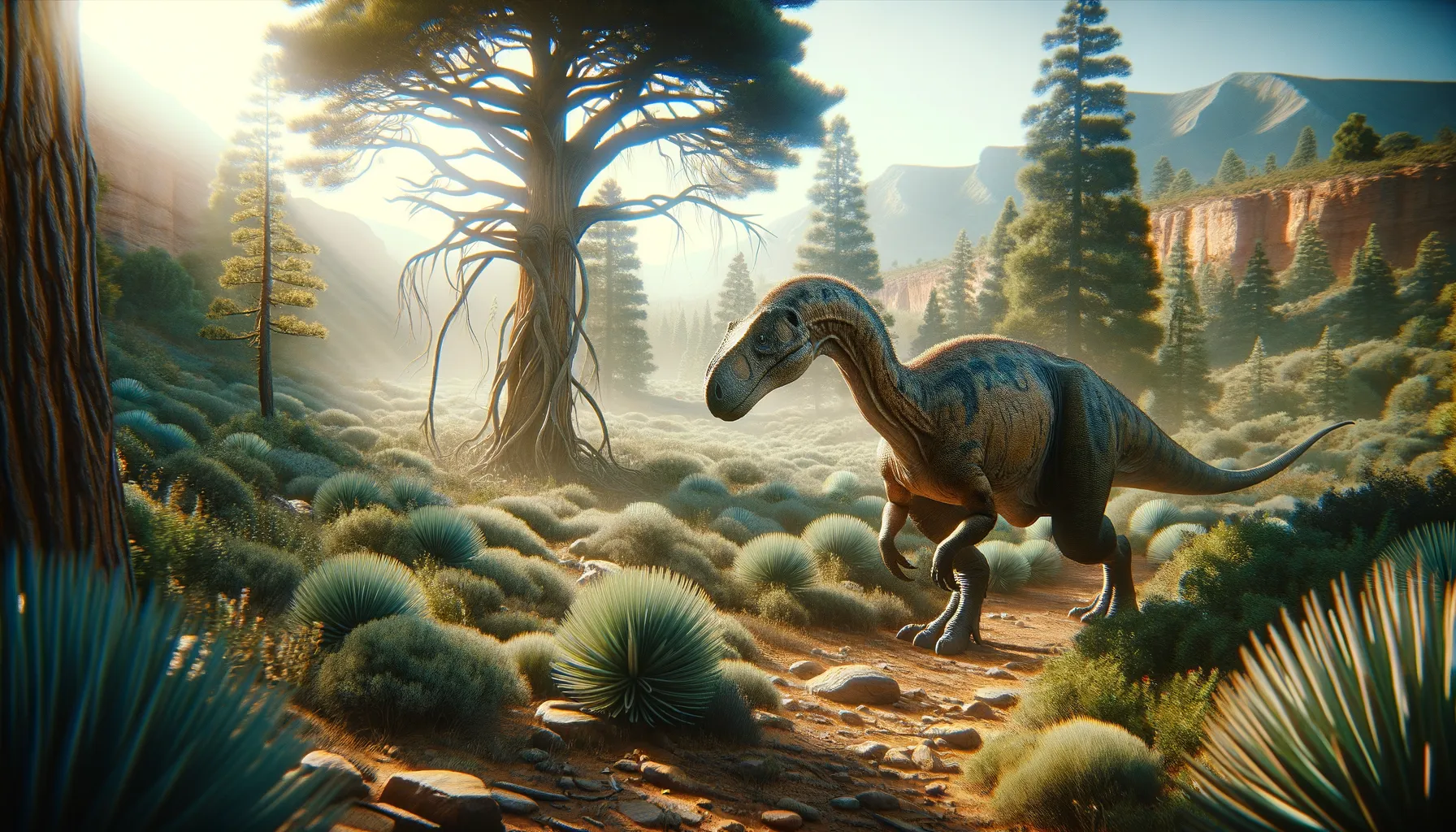
Jeyawati
The plant eater of the ancient world!
Period
Cretaceous
Length
Around 7 meters (23 feet) in length.
Height
Reached up to 3 meters (10 feet) tall.
Weight
Approximately 500 kilograms (1102 pounds).
Jeyawati was a herbivorous dinosaur that roamed the Earth during the Late Cretaceous period. It belonged to a group known as hadrosaurs, which were duck-billed dinosaurs. Jeyawati's discovery in New Mexico provided scientists valuable insights into the diversity and distribution of dinosaurs in North America. Its remains suggest it was adapted to forage on the vegetation available in its habitat, indicating a specialized feeding strategy for survival.
Diet
Jeyawati was a herbivore, primarily consuming plants. Its diet likely included ferns, conifers, and flowering plants, which were abundant in its environment.
Hunting
As a herbivore, Jeyawati did not hunt but foraged for food. It relied on its ability to process large amounts of plant material efficiently.
Environmental challenges
Jeyawati faced the challenges of a changing climate during the Late Cretaceous. Fluctuating temperatures and evolving plant life required adaptability in its diet and behavior. Predation from larger carnivores also posed a threat, necessitating potentially complex social behaviors for protection.
Speed
Jeyawati was likely a slow mover due to its size.
Lifespan
Jeyawati lived several decades, like many of its kind.
First discovery
Jeyawati was first discovered in New Mexico, USA, in 2006.
Fun Facts
- Jeyawati is a relatively newly discovered dinosaur, first described in 2010.
- The name Jeyawati means 'grinding mouth' in the Zuni language, hinting at its herbivorous diet.
- Jeyawati lived approximately 91 million years ago during the Late Cretaceous period.
- It was a plant-eating dinosaur, likely using its 'grinding mouth' to chew tough vegetation.
- Jeyawati was a relatively small dinosaur compared to some of its giant Cretaceous contemporaries.
- Its fossils were discovered in what is now New Mexico, hinting at its original habitat.
- Jeyawati is part of the hadrosauroid family, often referred to as 'duck-billed' dinosaurs.
Growth and Development
Jeyawati likely experienced rapid growth during the early stages of its life, similar to other hadrosaurs. Its development included growing a robust skull and teeth suitable for grinding plant material. Fossil evidence suggests that growth rates varied depending on environmental conditions and resource availability.
Habitat
Jeyawati lived in what is now modern-day New Mexico, which during the Cretaceous was a lush, forested environment. It inhabited areas rich with rivers and lakes that supported diverse plant life. These habitats offered abundant food resources and also posed challenges such as seasonal changes.
Interaction with other species
Jeyawati coexisted with various other dinosaur species, including both herbivores and predators. Its interactions likely involved competition for food resources with other plant-eaters. Defensive behaviors were essential for avoiding predation by larger carnivores like tyrannosaurs.
Natural lifespan
Jeyawati may have lived naturally for 20 to 30 years given optimal conditions.
Reproduction
Like many dinosaurs, Jeyawati reproduced by laying eggs. Nests were likely built in secure locations to protect the young from predators. Parental care may have been necessary to ensure survival through the vulnerable hatchling phase.
Social behaviour
Jeyawati may have been social, living in herds to enhance protection against predators. Such group dynamics could have played a role in mating, foraging, and raising young. Communication within herds could include vocalizations and visual signals.
Fossil locations
Fossils of Jeyawati have predominantly been found in the Bisti/De-Na-Zin Wilderness in New Mexico. Their discovery has contributed significantly to understanding the diversity of the dinosaur population in North America during the Late Cretaceous.
